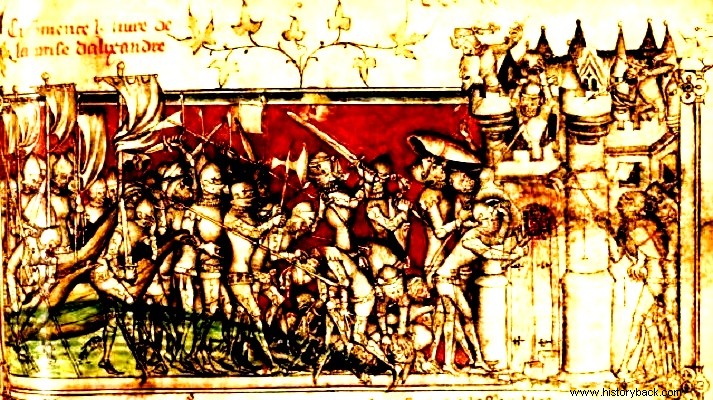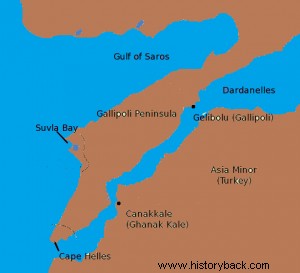
In 1366, the Byzantine Empire was, by euphemism, a state. The Ottomans, after capturing the Gallipoli peninsula in 1354, secured a stable bridgehead in Europe which the Byzantines tried in vain to recover.
With Gallipoli as their base, the Turks rapidly expanded into the former Thracian and Macedonian provinces of Byzantium, without substantial resistance. During this period, the state was ruled by John V Palaiologos, a not so gifted ruler.
John had asked for help from the West, even going so far as to go to meet the Hungarian king in 1366. On his return, he was captured by the Bulgarians, probably through the mediation of Andronikos IV's son.> who wanted the throne for himself.
Recovery of Gallipoli
Meanwhile the emperor's cousin (by his mother Anne of Savoy) Count Amadeus of Savoy, known as the "Green Count" , undertook the execution of a crusade against the Turks. But he had small forces (15-16 ships and 1,700 men).
This small force looks ridiculous in front of the Turkish verses. But Amadeus' men were experienced and well armed. The "Green Count" arriving in the city where the wretched Andronikos IV ruled, decided to attack Gallipoli. If he occupied the eponymous fortified city and the peninsula, he would cut the Ottoman state in two and make it difficult to transfer Turkish forces from Asia Minor to Europe and vice versa.
So the crusaders moved against the city reinforced by a few men of the ruler of Lesbos and son-in-law of John V, Francesco Gateluzzo and - according to Italian sources of the time - with a few Byzantines under the patriarch of Constantinople Philotheos Kokkinos. However, this information is controlled.
On August 22 the crusaders and their allies attacked Gallipoli by land and sea. Information about how the city was taken is confusing and there are two basic versions. During the first, the Turks abandoned it in fear and the inhabitants opened the gates to the Christians. According to the second and more likely, the city was captured by assault with the Turks of the acropolis surrendering on August 26.
The next day the message of the first Christian victory against the Turks he was sent to Constantinople and from there to the West. The recovery of Gallipoli was an event of great importance that might have changed the fortunes of the Byzantine Empire if there had been no discord and there had been worthy leadership. Unfortunately, neither was true. The winners on September 4 returned to the City. Then the crusaders marched into Bulgaria and forced the Bulgarians to release the emperor who returned and regained his throne.
Amadeus continued his action until May 1367, capturing two Turkish fortresses near Constantinople, freeing it from the Ottoman suffocating pressure. He also defeated the Turks who attacked Sozopol in present-day Bulgaria.
However, he had no other resources and the emperor was unable to maintain even this small body, to such a decline had fallen the once mighty empire. Finally, in June, Amadeus and his men left after surrendering Gallipoli to the Byzantines.
The Betrayal
After the departure of Amadeus, John decided to travel again to the West asking for help. But due to debts he was detained in Venice. Andronikos IV seized the throne again. Finally John returned in 1371. But his son rebelled against him in 1376.
Giving the Turkish sultan Murat the strategically important peninsula of Gallipoli and the Genoese Tenedo, the traitor Andronikos became emperor in the ruins of the Byzantine state, imprisoning his father and his brother Manuel.
Head of the Turks, Andronikos entered Constantinople "triumphantly" in 1376. His reign lasted about three years, when John and Manuel escaped with the help of the Venetians and dethroned him. The traitor Andronikos fled to the Genoese, in Galata opposite the City, where he remained until 1381.
But then he was pardoned, instead of being executed in an exemplary manner, by the lazy John V, who according to Michael Doukas was only interested in women. John even granted Andronikos the city of Silivria as his personal fiefdom. This wretch rebelled again, in 1385, but he did not have time to harm the state any more as he died in the spring of that year.

Map of the Gallipoli Peninsula. Its strategic position as a bridge between East and West is obvious.
